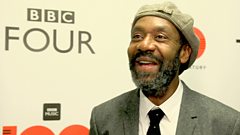
Pierre Boulez: Le marteau sans maître
18 June 1955 saw the world premiere of a new work with a strangely surreal title.
18 June 1955 saw the world premiere of a new work with a strangely surreal title.
Le Marteau sans maître ("the hammer without a master") was a nine-movement, 35-minute work for small ensemble and vocalist by the 30-year-old French firebrand Pierre Boulez. The audience in the studio in Baden Baden was select, international and specialist: this was the 29th annual Festival of the International Society for Contemporary Music (the ISCM), where composers and programmers from all round the world congregated to discover what was new in new music.
Even so, there was great controversy among the French delegation that Boulez had been chosen to represent their country. But the review in the Dusseldorf Mittag newspaper a couple of days later declared: ‘A star is born... this was not only a new name, a new work, [...] but (the audience) could sense that a new world was being entered into with assurance and bold imagination".
The reviewer, Wolfgang Steinecke, was hardly impartial. He had set up the Darmstadt Summer School - the cradle of the post-war avant garde - a few years earlier. Boulez was one of Darmstadt's stars, along with Stockhausen, Nono, Maderna and Berio: a generation that felt the need to rip up the musical past in the aftermath of World War Two. The young Boulez had a particularly Oedipal relationship with his composer predecessors: he had been known to heckle at concerts of music by Stravinsky, and even his teacher Messiaen. After the death of Schoenberg in 1951, he wrote a searing article entitled Schoenberg is Dead - its meaning both literal and symbolic.
There’s no doubt that there was something extraordinary in the sound and form of Le Marteau sans maître. The form of the work was subtly revolutionary. Boulez only used texts in four of the nine movements: the remaining movements are foreshadowings, echoes, commentaries, postludes to the poems. The other thing that was so new about Le Marteau was the actual sound of the seven-piece ensemble that Boulez had chosen: a low female voice, a viola, a guitar, an array of tuned and un-tuned percussion. The sound had something sensuous or exotic about it: it was the sound of music from around the globe, heard through the rarefied filter of high European modernism.
A couple of years later, when Stravinsky heard Le Marteau in California, he didn’t go so far as to say that he liked it - but he couldn’t help but be impressed.
This is one of 100 significant musical moments explored by Â鶹ԼÅÄ Radio 3’s Essential Classics as part of Our Classical Century, a Â鶹ԼÅÄ season celebrating a momentous 100 years in music from 1918 to 2018. Visit bbc.co.uk/ourclassicalcentury to watch and listen to all programmes in the season.
This is an excerpt from a recording by Ensemble Intercontemporain with Pierre Boulez himself.
Duration:
This clip is from
Featured in...
![]()
The music of Our Classical Century—Our Classical Century
100 recordings to celebrate 100 years of exciting, inspirational, rule-busting music.
More clips from Our Classical Century
-
![]()
Step outside your musical tribe
Duration: 02:49



